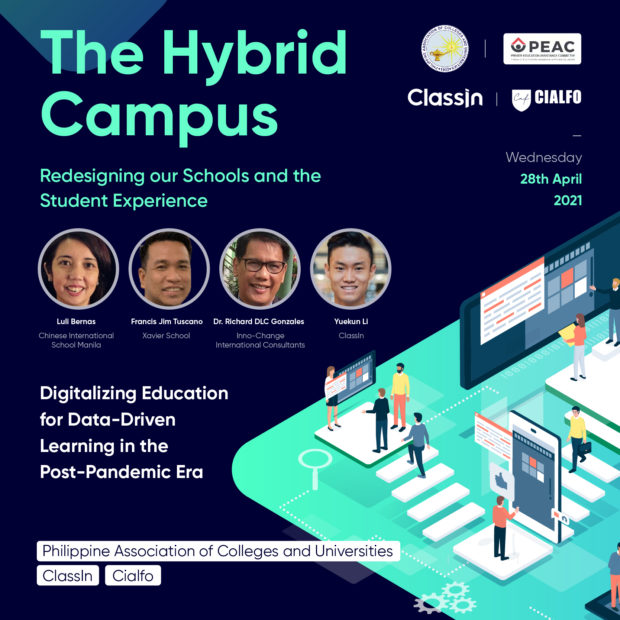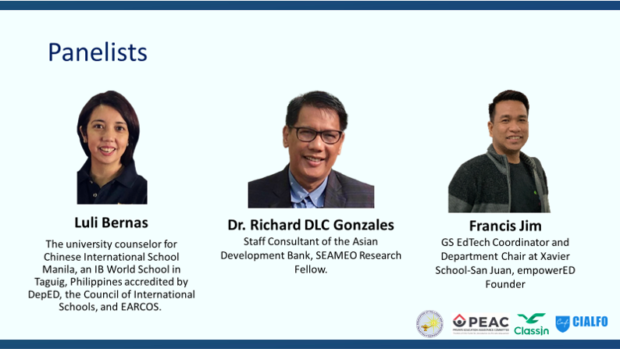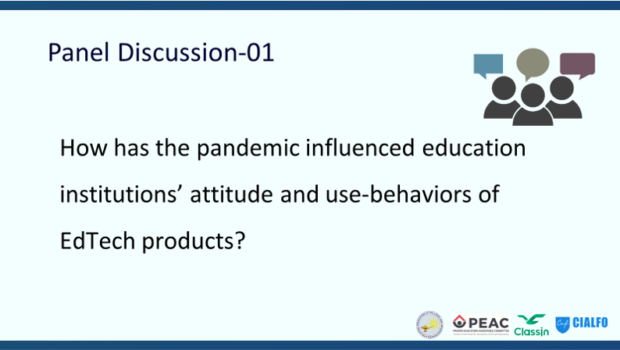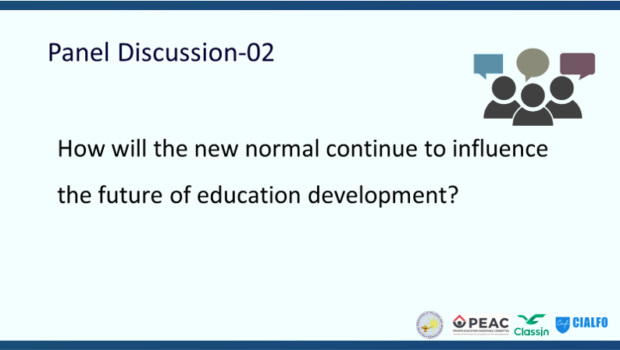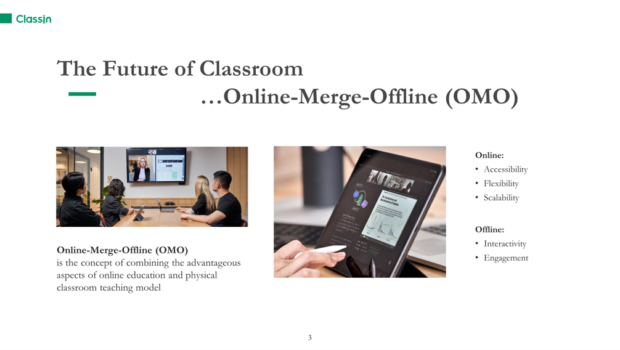Re-imagining EdTech and the classroom in a post-pandemic era
The educational system’s response to the global health crisis demonstrated how technology can transform the way teachers teach and students learn. This new transformative approach and beyond-the-classroom learning found schools in all levels embracing education technology apps and online remote classes, with every teacher and student trapped in the online space for more than a year. But as lockdowns ease and everyone seems to be looking forward to going back to traditional campus learning, we are rethinking where EdTech solutions can be continually used. Will an on-campus education benefit from the potential merge and infusion of digital solutions? What modality of education will we then see in a post-pandemic era?
ClassIn, one of the leading online educational solutions provider that offers alternative and genuine virtual classroom environment, recently collaborated with Philippine Association of Colleges and Universities (PACU) and Cialfo to bring together education industry thought leaders and experts in a webinar entitled “The Hybrid Campus: Re-designing our Schools and the Students’ Experience.”
The panel was composed of Luli Arroyo-Bernas, University counselor for the Chinese International School, Manila; Dr. Richard Gonzales, representing Inno-Change International Consultants Inc; Francis Jim Tuscano, a GS EdTech Coordinator and Department Chair at the Xavier School; and Yuekun Li, ClassIn Country Manager for Philippines and Thailand.
The webinar, through these industry experts, attempted to answer questions to explain how the pandemic has influenced education institutions’ attitude towards the use-behaviors or EdTech tools and how will it influence the future of education in a post-COVID experience. The panel explored the future possibilities of digital campuses and brainstormed use-scenarios of digital learning systems by laying down the challenges, gaps, solutions, and opportunities in the future of education.
Embracing technology for the long-term
Education has been one of the most impacted sectors during the COVID-19 pandemic. Immediately, hundreds of thousands of educators and students ventured into the academic cyberspace and started giving and receiving education online. The chalk-and-talk method was suddenly replaced with digitizing education, resulting to enhanced learning. However, not all teachers or students were prepared for this paradigm shift. Teachers were caught unprepared when they were asked to shift instructional modality from face-to-face to online environment.
“The challenge was not only in the availability of technology but also on how to use these technology resources, that compounded the challenge. Students were also confronted by these challenges, except for those kids whose parents have mobile phones and laptops, most students do not have the knowledge to go about this instructional experience,” Dr. Gonzales said.
The gap is not only more pronounced between private and public schools, but also in private schools which have already adapted blended learning and those that embraced online learning for the first time. Tuscano admitted that while Xavier School, a large private school operating for more than 60 years now, has already been using digitized education blended with the traditional modality for more than 10 years, because of the pandemic, everyone just jumped to technology immediately. There was no smooth transition.
“When we started using iPads in school, it took us so many years to progress. I saw teachers and students who did not recognize it as an educational tool at first. The challenge that I see is having to upscale everyone and not making them understand the reason behind it. So, teachers and students did not really understand why they were doing it; or they understood why but the messaging—even to parents—is that technology is a temporary solution. There is no complete embrace of technology, no long-term vision. It’s as if when we go back to traditional campus education, we will leave technology behind,” he explained.
The pandemic definitely influenced the use-behaviors of institutions of these EdTech products, but it is not enough to have access to a device at home and be able to use of it because this public health emergency called for it. It should be the whole mindset, behavior, and vision of technology that must be changed; the goal has to be long-term. Technology is not merely a band-aid solution, it is here to stay.
The structure of schooling and learning in the new normal
The pandemic has become a litmus test of sorts for school leadership as well. It has prodded school educators and leaders to make major decisions, assess, and find solutions according to the needs and requirements of each school. In terms of influence in the new normal, Tuscano recommends listening to teachers as they are the school’s frontliners who continue education despite these difficult times. Thus, every decision-making process institution does should have a teacher representation.
“One important thing to be considered is the connection and partnership between the school and home; parents must cooperate with the school, and the school should listen to the parents. Parents should know when to step back and just supervise as to also transform your relationship with your child,” Bernas suggested. Maximizing each one’s roles is indeed crucial in the blended or hybrid campus of the future.
According to Li, learning to master EdTech systems has become a challenge especially during the early stages of the pandemic. “We have almost become blinded by all technology products but once we get into pace, everything starts to flow in a much more streamlined manner,” Li assured.
The new normal requires a flexible and blended distance learning modality of teaching and learning. And if there is a silver lining to the pandemic crisis, it has given educators, and education leaders and advocates to see this as an excellent opportunity to rethink the future of education development. Gonzales noted how we have somehow taken technology for granted and were compelled to embrace it during this global pandemic. “We did not ready ourselves for this type of learning environment and educational development. The good thing is, educators, school leaders, and students became resilient and started exploring alternative systems and were ready to learn. This might be one of the positive outcomes of the pandemic; suddenly we know about all digital platforms and we were allowed to be more creative, resilient, and compassionate in delivering education, no matter what the means and modality are,” Dr. Gonzales emphasized.
The education transformation in the post-COVID landscape
In the post-pandemic landscape, the way we teach and the way we learn will change. The classroom of the future will open a new chapter where students will be empowered to learn in more flexible and collaborative ways at their own pace and teachers will have access to real-time data on how well their individual students are progressing in both their scholastic and mental well-being in place. But information and communications technology (ICT) will be there.
Adaptation of technology was not a choice, because technically, both teachers and students didn’t have a choice. Thus, technology will always be there for the long haul. As Dr. Gonzales noted, removing technology from students of this generation will impair them, especially now that all aspects of life including lifestyle, shopping, eating, teleconsulting, and education revolves around cyberspace. ClassIn, for instance, is a valuable aid for teachers who are relentlessly motivated to guarantee that the quality of education is never compromised, especially those educators who are going above and beyond their responsibility and continually look for ways to spice up teaching and learning interactions.
For the education in the post-pandemic era, Tuscano underscored the importance of teachers and institutions who are anchored to their core belief. “We should not be hung up on the kind of technology products when we started on our digital education, I realized how fast apps and gadgets would come and go, and it’s a rookie mistake to anchor everything on a piece of gadget. We are advocates of technology and we know it’s going to be there in the new normal, but loyalty should be in your vision and core belief as an educator and as a school,” Tuscano said.
To effectively manage a hybrid classroom, one should check the capacity and the well-being of both students and teachers. It is important to make all online interactions as creative as possible in order for students to remain engaged and easily visualize and enjoy their new learning experience. In an era where education has taken massive paradigm shifts, EdTech apps such as ClassIn gives teachers the alternative venue to animate and get creative in their own virtual classroom environment.
During this global health crisis, ClassIn has uncovered a number of exemplary teachers who never compromised the quality of their teaching and continually look for ways to spice up online class interactions. ClassIn provides them with distinctive built-in features (such as a virtual blackboard, text collaborator, virtual timer, multi-screen sharing, and many more), while motivating students to be more interactive in the online class with the raise-hand icon, and reward trophies in order to motivate them to be more involved and dynamic participants.
The need for education is constant and teachers are irreplaceable, thus, technology will continue to re-imagine schools morphing into more dynamic learning hubs. Post-pandemic, we can visualize a hybrid model of education where technology will become an integral part of traditional classroom education resulting to a more responsive, adaptable, and technologically advanced teacher-student learning. However, it is also important to reconsider the current approach, distribution, and pedagogical methods in school.
This can be achieved by seamlessly integrating classroom learning with e-learning modalities (with the right vision and mindset) in order to build a unified learning system where offline environment is recreated in the online space, and where technology is used to maximize and create an enhanced teaching and learning experience, just as what ClassIn has been advocating. It hopes to create an eco-system styled solution for future education, where pre-lesson prep, in-class activities, and post-lesson interactions are all connected and recorded into a continued chain of data to help learners and educators better evaluate learning progress and efficacy.
ClassIn believes that online pedagogy could seamlessly complement the traditional classroom teaching and learning. It all depends on the approach or method of lecturing, fused with the educator’s creativity for it to truly be successful. Using these EdTech tools will provide all students with the opportunity for a more interactive learning and motivate them to respond in equally creative strategies. Just as long as all lessons are student-centric, with the ideal amount schoolwork, breaks, and spaces to recharge, students will be able to gear themselves up again through an ever-dynamic method of teaching and learning, in a hybrid campus in the not-so-distant post-pandemic future.
INQUIRER.net/JC
advt.
